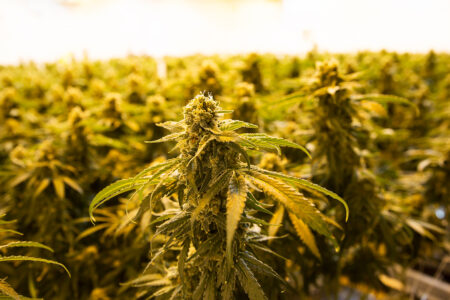
Despite projections that Canadians will spend up to $7.17 billion on cannabis in 2019, and despite the fact that 28 percent of users are already consuming edibles, our policy-makers have still to announce the regulations for this major part of the cannabis market. The federal government has promised that edibles will be legally available to consumers by October 2019, but prolonged regulatory uncertainty is bad for everyone.
Properly regulated edible cannabis products present the best opportunity to build a sustainable market for responsible cannabis consumption; however, these products also present serious short-term risks of accidental overconsumption. Canadian policy-makers should pay close attention to the legalization experience of Colorado — where edibles were initially introduced in an unregulated manner — because it provides valuable insights into the dangers of edibles.
In Colorado, edibles are a $170-million industry, with over 13 percent of the total recreational cannabis market. They are also growing in popularity: from 2014 to 2017 the consumption of edibles in Colorado grew 15.4 percent faster than the overall cannabis market. Edibles’ market share grew despite prices for smokable cannabis falling by 62 percent over this time, while the price of edibles stayed fairly constant.
It’s not clear why edibles are so popular or who consumes them, but there are indications that they are consumed mainly by newer and less frequent users. The rate of edibles consumption in Colorado is twice as high in the retail market as in the medical market, and they take up nearly 25 percent of the market in tourist areas, as opposed to in the state’s overall adult-use market, where they account for 13.4 percent. This is significant because a major problem in Colorado is that cannabis demand is driven overwhelmingly by heavy users: people who consume cannabis 21 to 31 days a month represent 26.8 percent of users but 82 percent of demand. The popularity of edibles among casual consumers may be good news for reducing the public health costs associated with long-term heavy smoking of cannabis.
Policy-makers should keep a close eye on the potential benefits of edibles, which do not cause lung damage; nor do they create second-hand smoke or odours. Furthermore, as Dalhousie University professor of food policy Sylvain Charlebois has pointed out, the cannabis plant contains many nutrients and is rich in vitamins; its use in the $200-billion food industry could be the biggest thing since the introduction and growth of gluten-free products.
Initially Colorado’s cannabis laws did not specifically regulate alternative cannabis products, even though edibles often have a more intense effect on the brain than traditional, inhaled cannabis. The effects of edibles also take longer to be felt, which can lead to accidental overconsumption by impatient users. Without guarantees of consistency in the potency of each cookie, candy or brownie, Colorado consumers were taking a risk every time they ingested edibles. If the black market is allowed to dominate the edibles industry in this country, Canadian users will be subject to the same risks.
Colorado’s Rocky Mountain Poison and Drug Center has reported that about 40 percent of its marijuana calls are related to edibles — and that number climbs to 54.5 percent among children under 8. While the centre’s total number of calls is at most a few hundred per year, a few high-salience examples of the dangers of cannabis could do serious damage to the political viability of legalization and the profitability of the industry in Colorado — and in Canada.
Minimizing accidental overconsumption of edibles depends upon controlling serving sizes and educating consumers about responsible consumption. Standardization of the level of THC, the active ingredient in cannabis, is crucial: careful oversight is required to ensure that the same product has the same effect each and every time it is consumed. On the education front, potential consumers need to be informed about the differing effects, dosage intensities and health impacts of various products. Even if the dosage is adequately controlled by government oversight, consumers need to know to limit their intake. Potential users need to be educated in how to safely consume smoke-free products in reasonable quantities and appropriate circumstances. A proper education program should help to generate revenues from responsible consumption, which in turn can be used for continued education, thereby creating a more sustainable cannabis industry.
In the interest of developing a more sustainable cannabis industry in Canada, policy-makers should focus on two important measures: they should create public education programs that inform consumers about the differences between various types of products; and they should ensure that edibles are available in sensible serving sizes. Casual consumers are not likely to appreciate the difference in severity of 10 milligrams of edible THC versus 100 milligrams. A single cookie or brownie should not contain more than a regulated single serving of THC.
Canadian policy-makers need to regulate edibles in a way that encourages responsible consumption. Under Bill C-45 (the Cannabis Act), individual provinces have the ultimate say on access to and taxation of edibles, while the federal government has control over the standardization of serving sizes and potency of products. The policies of the two levels of government need to work in tandem if cannabis legalization is to be effectively implemented.
If the federal government keeps the potency of legal edibles low to avoid accidental overconsumption, but provinces decide to tax edibles heavily, consumers will stick to nonedible products, which carry the risk of long-term lung damage. Alternatively, if provinces implement tax structures that deter cannabis smoking, but the federal government does not limit the potency of edibles, we will probably see a spike in cannabis-related hospitalizations, as was the case in Colorado.
Nearly 6 out of 10 likely cannabis consumers in Canada say they plan to purchase and use edibles. There is a demand for these products that the legal market needs to meet before the illicit market does. Because little is known about edible cannabis and its consumers, regulatory flexibility will be critical. Even after four years of legalization in Colorado, there is still a lack of data about who consumes edible cannabis and how much they consume. Canada needs to track consumer trends in the legal edibles market and be ready to adjust regulations and public education accordingly.
Alternative forms of cannabis consumption present the greatest potential for positive economic and public health outcomes from legalization, but they also present some of the greatest risks because these products are disproportionately used by less knowledgeable consumers. Lessons gleaned from the impact of edibles in Colorado should help to lead Canada toward sensibly constructed policies. Given the projected popularity of edibles among consumers, prompt action from Canadian cannabis policy-makers is urgently needed.
This article is part of The Economics of Canadian Cannabis special feature.
Photo: Candy bars marked with Colorado’s required diamond-shaped stamp noting that the product contains marijuana are shown in the kitchen of BlueKudu candy in the historic Five Points District of Denver. (AP Photo/David Zalubowski)
Do you have something to say about the article you just read? Be part of the Policy Options discussion, and send in your own submission. Here is a link on how to do it. | Souhaitez-vous réagir à cet article ? Joignez-vous aux débats d’Options politiques et soumettez-nous votre texte en suivant ces directives.









